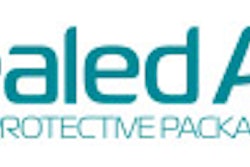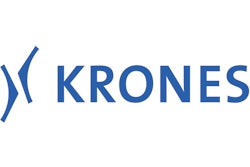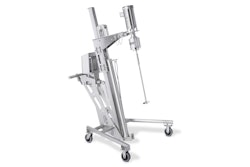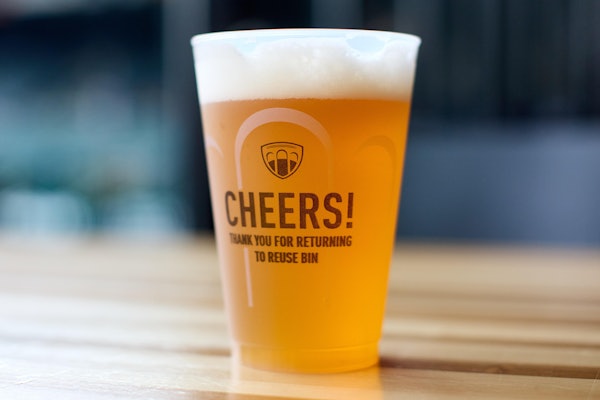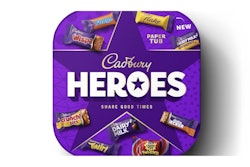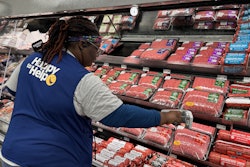Forewarned is forearmed, the saying goes. And if anybody needs to be forearmed these days, it’s packaging professionals who operate in the food and beverage sector, where fast-paced change is the only constant.
So here for all you food and beverage packagers—as well as those operating in other market segments who can learn from food and beverage trends—is a peek at what’s coming down the packaging pike. It doesn’t aim to be comprehensive or all-inclusive. But it’s based on the outlooks of leading experts in the food and beverage space, so it should provide some useful signposts on the road to what’s next.
Why not begin with sustainable packaging?
“Consumer awareness of sustainable packaging is growing,” says George Kellie, director of UK packaging consultancy Microflex Technologies. “People want the packaging to reflect the ethos of the product, especially where organic food is concerned. The packaging must be as good for the environment as the food is good for the body. In addition, people are finally beginning to accept that oil is a limited resource and suitable alternatives have to be found. The legislation passed recently in France that would ban plastic packaging in 2010 if it isn’t biodegradable, that’s an extreme example of this trend. But it does reflect public opinion. So despite the many vital contributions to society made by plastic packaging, the fact remains that public opinion of plastic packaging is negative. At the very least, it says clearly to suppliers and users of plastic packaging, ‘Wake up, it’s a changing world.’”
Nestle’s launch of Dairy Box chocolates in a compostable/biodegradable tray made of Plantic, based on corn starch, is one clear sign that the message is getting through (see page 12). That package is in the UK, but interest in sustainability is equally high in North America. The Sustainable Packaging Forum sponsored this past October by Packaging Strategies drew more than 200 attendees to Philadelphia.
Among the comments made were those by Matt Kistler, vice president of product development and private brands at Sam’s Club/Wal-Mart Stores. He encouraged suppliers to bring sustainable packaging ideas to the Bentonville, AK-based retailer, even if they come at a premium. He also described a sustainable packaging initiative that was launched at Wal-Mart stores last month. It involved the elimination of 114 million clear petroleum-based plastic clamshells and their replacement by containers made with corn-based polylactic acid from NatureWorks. “This is a way to make a change positive for the environment and for business,” said Kistler at the forum.
Consultant Mark Niemiec agrees with Kellie’s thoughts on sustainable packaging and its ability to reflect the ethos of the product.
“It could grow significantly in those cases where product and package become one,” says Niemiec. “Take water or milk, for example, where the product is good for you and the package is good for the environment. To what extent will mainstream food and beverage packaging be affected? We’ll have to wait and see.”
Niemiec attended the October sustainability forum in Philadelphia and had this to say about Kistler’s remarks. “It might represent a turning point. I do know it was a different message than what the people in that room are accustomed to hearing.”
Niemiec also wonders if corporate behavior where packaging is concerned will grow more receptive to the idea of a triple bottom line. Under those circumstances, CEOs will have to ensure that their companies are socially and environmentally, as well as fiscally, sound.
“Look at Dannon,” says Niemiec. “They used to have a plastic overcap on each cup of yogurt. Now they’ve done away with it and have a message on the foil lidding explaining why.”
Expect to see the interest in sustainable packaging continue to grow, especially now that rising oil costs have practically eliminated the premium that packagers used to have to pay for packaging materials made from renewable resources.
Hot-fill vs aseptic
Some industry observers have been predicting that we’ll soon see an influx of aseptically filled plastic containers in place of hot-filled PET. Their reasoning: bottles can be lighter and cheaper, minimal thermal processing will improve taste and nutrition profile, and the beverage industry’s entrenched investment in hot-fill lines consists of older equipment that’s in need of replacement anyway.
Gordon Bockner, president of Business Development Associates and a well-known observer/analyst of PET markets and technologies, is among those who believe that North America is about to see significant growth in low-acid beverages filled aseptically in PET. “Teas and milks, for example, or nutrition supplement products like Ensure or Boost, are perfect candidates,” says Bockner. “Currently PET is precluded from use in aseptics because the FDA prohibits any sterilant other than hydrogen peroxide. And hydrogen peroxide is unsuitable for PET because it’s absorbed by PET and can negatively impact product flavor. In Europe they use oxonia as a sterilant for PET, but in the U.S., the FDA hasn’t allowed it to date.”
Still, the popularity of PET among both consumers and brand owners—in particular, its clarity compared to the high-density polyethylene multiwall barrier containers that are currently being filled aseptically in the U.S.—will cause the beverage industry to find a way to make PET part of the aseptic filling picture, says Bockner.
“What I expect to see,” he says, “is Krones, Shibuya, Stork, Procomac, Tetra Pak, and KHS—the big players on the aseptic filling machinery scene—continuing to develop innovative sterilization processes that work with PET yet can be approved by the FDA. Will the solution be oxonia? Maybe. But maybe not. Remember, just because something works in Europe doesn’t mean it’s a slam dunk here.”
Ray Bourque, president of packaging consultancy Ray-Pak, Inc., agrees that aseptic filling of low-acid products in rigid plastic should see wider acceptance. “Especially since some of these ‘new-age’ drinks don’t lend themselves to being hot-filled from a quality and nutrient-content point of view,” says Bourque. “At the same time, aseptic filling systems have advanced considerably over the last few years. You see smaller aseptic chambers and higher speeds now that rotary, as opposed to linear, systems have been developed. And to some extent, the complexity and upfront cost of an aseptic filling system are tapering off. So what you see are some of the barriers to entry coming down.”
Another recent development in aseptic packaging that could be a sign of things to come is the October launch of Nautix by Jumex of Mexico City. This line of flavored waters aimed at children represents the first commercialization of Tetra Pak’s Tetra-Wedge Aseptic Clear technology. Nautix beverages are packaged on a Tetra Pak TVA-19 machine similar to those that produce foil-based Tetra-Wedge packs (see page 11). What makes Nautix special is that its package structure uses clear silicon oxide (SiOx) instead of foil as its barrier layer. The 200-mL wedges still have a one-year shelf life like other shelf-stable drink packs that are aseptically filled. But clarity becomes a key differentiator that brings marketing and shelf-impact advantages.
Here comes hot fill
Paralleling these and other advances in aseptic filling are improvements in hot-filling of plastic containers. “Hot-fill still will have its place, especially in the juice and sports drink segment,” says Bourque.
That brings us to Trinity Organic from Trinity Springs and Adrenaline Sport from SoBe Beverages. Both bottles represent breakthroughs because they are free of sidewall vacuum panels. These panels have traditionally been required in hot-filled PET because when the filled and capped bottle cools, an internal vacuum forms and must be dissipated to prevent the sidewalls from collapsing.
Trinity Springs, based in Boise, ID, selected Amcor PowerFlex technology to meet its hot-fill PET needs. The 16-oz PowerFlex bottle has a specially designed base that absorbs vacuum pressure without the need for sidewall panels. That in turn means the bottle is easier to label and graphics can be designed without having to worry about panel location.
SoBe Beverages went elsewhere for its panel-free hot-fill solution. The Norwalk, CT-based company, a separate operating unit of Pepsi-Cola North America, tapped Constar Intl. to supply 20-oz bottles for its Adrenaline Sport line. In this case, the new technology permitted a switch from multilayer PP to clear PET while still getting as close as possible to the look of a cylindrical glass bottle. The Constar bottle is an example of Controlled Radial Deformity, where multiple geometrical elements combine to manage package distortion caused by the buildup of internal vacuum.
Because these panel-free PET containers open up labeling and graphics opportunities previously unavailable in hot-fill PET, we’ll probably see more of them in 2006 and beyond.
Time for HPP?
One technology that shows promise in both food and beverage is High-Pressure Processing (HPP). Food packaging authority and consultant Aaron Brody put it this way in a recent issue of Food Technology magazine: “Recent successes suggest that, despite the questions about capital costs and packaging and process cycle times, high-pressure processing appears to have sufficient merit to warrant optimism.”
By subjecting foods or beverages to pressures in the range of 87ꯠ psi, the cell functions of bacteria—including listeria and clostridium botulinum—are disrupted, causing the bacteria to die. This permits food marketers to package and market fresh, refrigerated, minimally processed, and preservative-free food products with a shelf life that’s long enough to get their products to consumers when they want them and at a price they’re willing to pay.
Though high-pressure processing is largely a food processing technology, packaging plays a central role.
“Because the product is usually packaged first and then processed in its package, the packaging materials used are as critical as the processing technology,” says Marcia Walker, vice president of technology and microbiology at Avomex Inc., the Keller, TX, firm that has been blazing an HPP trail for about a decade now. “You have to be sure the high pressure won’t delaminate a pouch structure, for example, or cause a component of the packaging material to migrate into the product.”
In addition to its sizeable HPP business in foodservice, Avomex produces some 25 items exclusively for Texas supermarket chain H-E-B, including avocadoes, guacamole, salsa, and juice. Just introduced under the Avomex brand is the Menu Fresh line of refrigerated meal kits.
Juices produced by Avomex are pressurized in batches and then “clean-filled,” says Walker. “The bottles take up too much room in the pressure vessel, so throughput would be unacceptable if we bottled first and then pressurized.”
Avocadoes and salsa, on the other hand, are packed on a horizontal form/fill/seal system and the pouches are then subjected to HPP. Refrigerated shelf life varies from product to product, but in every case it’s sufficient to allow Avomex to bring fresh, minimally processed, refrigerated foods to markets nationwide.
When asked why Avomex is virtually alone in using this promising technology in North America, Walker pointed to the high cost of the machinery that’s needed and to the slow throughput that’s basically inherent in such a batch-oriented process. But pointing to a line of HPP deli meats launched recently by Hormel, she suggests that this processing/packaging technology may now be poised for growth.
“It’s highly effective against listeria, and I think that’s what will make this technology take off,” says Walker. “Too many solutions currently used for ready-to-eat meals are not working. There are too many recalls.”
What about fish?
With centralized packaging of fresh red meat now firmly established, will we begin to see fresh fish in modified-atmosphere packages? Consultant Brody thinks not. He believes the risk of anaerobic spoilage producing potentially lethal pathogens will keep MAP on the sidelines where fish is concerned.
Ronnie Wrenn of Fresher Than Fresh disagrees. His Gastonia, NC, firm packages fresh fish by evacuating, backflushing (carbon dioxide and nitrogen), and sealing the product into barrier trays in barrier film from Cryovac. “We guarantee freshness for ten days,” says Wrenn. The Harris Teeter chain of supermarkets in the southeast is among Wrenn’s biggest customers.
Fresher Than Fresh gets a boost from the time/temperature indicator placed on each package. Supplied by Temptime, the indicator provides a visual indication of potentially damaging heat exposure throughout the lifespan of a food or healthcare product. Based on a gradual, irreversible color change, the indicator supplements the printed “sell-by” code.
Wrenn believes case-ready fresh fish in MAP will begin to expand as soon as retailers and consumers alike wean themselves from the notion that there’s only one format for fresh fish in the store: on ice. Wrenn points to two drivers that he thinks will move case-ready fish forward. “In-store labor savings is one, and it’s a significant one. But the reduction in shrink, which currently runs in the 25- to 30-percent range, is also very compelling.”
Wrenn also predicts that we’ll see much wider use of time/temperature indicators on all kinds of food packaging. “Track and trace is a growing trend, and these indicators are an important tool in the track-and-trace tool box,” he points out.
Movements in machinery
From the supplier side of the food and beverage packaging picture, expect to see packaging machinery manufacturers more focused on alliances and integration. At the Packaging Machinery Manufacturers Institute’s Fall meeting, for example, considerable energy was spent on promoting PMMI’s Packaging Solutions Initiative, a key plank in which is alliance building. It’s clear that PMMI members believe they can better compete against offshore machinery suppliers now making serious inroads into the North American marketplace if they form alliances among themselves to solve end-user problems and if they make it easier for each other’s machines to be integrated simply and successfully in today’s packaging lines.
A glimpse at what those lines will look like is available in these comments from Helmut Traitler, vice president packaging at Nestlé and one of the keynote speakers at PMMI’s recent Pack Expo Las Vegas Conference.
“There will be more customization than ever before, and it will be aimed at meeting specific groups or demographic needs. That means we need increased flexibility from packaging equipment. Yet if we sacrifice speed in achieving flexibility, we can’t achieve true cost optimization. So we need packaging equipment that will let us square the circle, that is to say, maximize speed and maximize flexibility. This will require smart engineering. Machinery builders may have to do a little soul searching to provide that kind of easy-to-changeover yet high-speed equipment.”
Traitler insists that this squaring of the circle can be done, and he provides an example from within Nestlé.
“We are in the process of rolling out stand-up pouches for some pet care products across Europe. We started with low machine efficiencies because there are so many formats requiring changeover. But after a tremendous effort that included both the packaging equipment manufacturer and our own engineers, we have doubled the machine output. This is a trend we’ll see more of, this collaboration between packaging machinery builders and their customers.”
Traitler’s reference to stand-up pouches is a reminder of how popular that format has become. Expect to see more stand-up pouches for food—especially if more engineers find ways of maximizing machine performance in the manner described by Traitler.
Similar growth will come in retort pouches, which some are calling the most dynamic category in all of flexible packaging. Growth in this area will be enhanced by the emergence of greater functionality in the pouches being developed. For example, both Zip-Pak and Presto Products have now commercialized zipper reclosures that can withstand the pressures and temperatures of retorting. Such value-added features will certainly give an added boost to an already fast-growing segment.
Nanotechnology, China
Would any discussion about the future of packaging be complete without some discussion of nanotechnology and at least a quick look at China?
It’s easy to be dismissive when it comes to nanotechnology. The word itself sounds like something from a Mork and Mindy episode. But the giggles quickly subside when you consider these practical, real-world applications that are on the horizon:
• Kodak is using nanotechnology to develop antimicrobial food packaging that was supposed to be commercially available late this year.
• Scientists at Kraft are working on “electronic tongue” technology: nanoparticle films and other packaging with embedded sensors that will detect food pathogens. (Aaron Brody, would the use of these sensors make you feel any better about MAP for fresh fish?)
• Nanocor, a subsidiary of Amcol Intl., is producing nanocomposites for use in plastic beer bottles that provide a six-month shelf life.
As for China, space constraints prevent us from launching into that topic in any exhaustive way. But consider what consultant Niemiec has to say.
“So far China has been more borrower than innovator. But it wouldn’t surprise me to see some real packaging innovation from China. Remember, they don’t have a massive infrastructure in place. Having a clean slate like that can free you up to try whole new approaches, so don’t be surprised if we see something genuinely new one day from China in food and beverage packaging.”
Who knows, maybe it will be China that makes nanotechnology a commercially common reality in food and beverage packs?
See sidebar to this article: The experts











